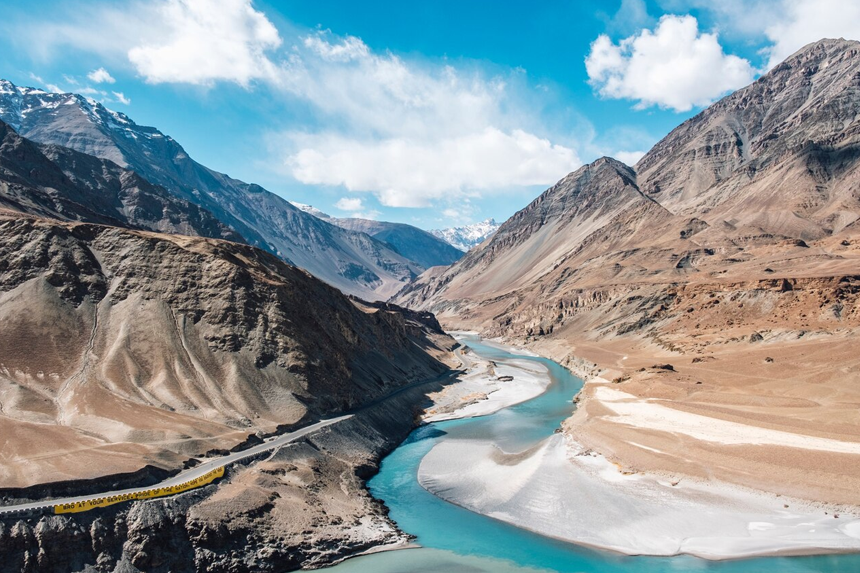India’s recent decision to suspend cooperation under the Indus Waters Treaty has stirred diplomatic tension and raised questions across South Asia and beyond. The treaty, seen for decades as a symbol of cooperation amid a hostile bilateral relationship, has withstood wars, cross-border skirmishes, and deep-rooted political disputes. However, the latest suspension, which followed a militant attack in Indian-administered Kashmir, represents the first time one party has formally disrupted the long-standing water-sharing accord.
- What triggered India to suspend the Indus Waters Treaty?
- How important is the Indus Waters Treaty to Pakistan’s survival?
- Can India physically stop or divert the flow of the western rivers?
- Could Pakistan still be vulnerable in dry seasons?
- Will India stop sharing hydrological data with Pakistan?
- Can water really be weaponised in the India-Pakistan conflict?
- What role does China play in the broader water equation?
- What is the future of the Indus Waters Treaty?
India blames Pakistan for harboring militant groups responsible for repeated attacks on its soil—a claim Islamabad continues to deny. In the wake of the attack, New Delhi announced that it would re-evaluate and suspend certain aspects of the treaty. Islamabad, in response, declared that such actions would be perceived as an “Act of War,” highlighting just how critical the Indus Waters Treaty is to regional stability.
What triggered India to suspend the Indus Waters Treaty?
The treaty was brokered in 1960, with assistance from the World Bank, and remains one of the few examples of a successful trans-boundary water-sharing agreement. It allocated the three eastern rivers of the Indus basin—the Ravi, Beas, and Sutlej—to India. The three western rivers—Indus, Jhelum, and Chenab—were designated for Pakistan’s unrestricted use.
The Indus Waters Treaty gave India limited rights over the western rivers, including for non-consumptive use such as hydropower generation. Despite the volatile political environment between the two nations, the treaty survived two wars and multiple border tensions, largely due to its clear terms and the World Bank’s role in dispute resolution.
However, India has long voiced frustration with its limited rights under the agreement, particularly in light of rising domestic water demand, climate change challenges, and the need for more hydropower. In moments of high tension—such as after attacks in 2016 and 2019—Indian policymakers have called for revisiting or even scrapping the treaty altogether.
How important is the Indus Waters Treaty to Pakistan’s survival?
The Indus Waters Treaty is more than just a document for Pakistan—it is a lifeline. The country is heavily dependent on the Indus River system. More than 80% of its agricultural land relies on irrigation from these rivers, and around a third of its hydropower comes from them.
Any reduction in water supply, even temporary, could have a severe impact on Pakistan’s food security, energy supply, and rural economy. Given the arid climate and already existing water stress in many parts of the country, disruption to river flows during dry months could exacerbate resource scarcity and social unrest.
For India, the importance lies more in strategic leverage. Being the upstream country, it has the geographic advantage, even if its infrastructural capacity has so far limited any significant control over water flow. Read another article on A Temporary Respite Amid Uncertain Waters
Can India physically stop or divert the flow of the western rivers?
While India has the theoretical right to use a portion of the western rivers’ water for non-consumptive purposes, experts emphasize that it lacks the necessary infrastructure to significantly withhold or divert the flow of billions of cubic meters of water.
Most of India’s current projects on the western rivers are run-of-the-river hydropower plants. These plants generate electricity by channeling river water through turbines without creating large reservoirs. As a result, they do not provide India with the capability to store or divert substantial volumes of water.
“The infrastructure India has are mostly run-of-the-river hydropower plants that do not need massive storage,” explained a South Asian water resource expert. Without large-scale dams or canal networks in place, India’s ability to cut off flows remains limited in the short term.
Could Pakistan still be vulnerable in dry seasons?
Yes, and that’s where the situation becomes more delicate. During dry months, river flow naturally decreases, and water availability becomes more critical. If India were to construct new dams or modify existing projects to store water for short durations—even within treaty limits—it could affect the timing and availability of water downstream.
“A more pressing concern is what happens in the dry season—when the flows across the basin are lower, storage matters more, and timing becomes more critical,” noted an environmental studies professor.
Without treaty constraints, India might no longer be obligated to notify Pakistan about changes in water release schedules or infrastructure plans, which could make it harder for Pakistan to plan irrigation cycles or manage reservoirs effectively.
Will India stop sharing hydrological data with Pakistan?
One of the most valuable components of the Indus Waters Treaty has been the mandatory sharing of hydrological data. This includes information on river flows, flood warnings, and weather patterns—especially important during the monsoon season when floods can cause immense destruction.
With the treaty suspended, India is no longer bound to provide this data. Indian officials have suggested they may stop sharing flood information entirely. This could significantly hamper Pakistan’s ability to plan ahead for extreme weather events and water management.
Interestingly, Pakistani officials claim that even before the suspension, the shared data was insufficient. “India was sharing only around 40% of the data even before it made the latest announcement,” said a former Pakistani commissioner of the treaty.
Can water really be weaponised in the India-Pakistan conflict?
The idea of using water as a geopolitical weapon—known as “weaponizing water”—has gained traction in regional discourse. While intentionally releasing water to flood downstream areas is technically possible, it’s extremely risky and could harm Indian territories as well.
However, experts warn that India could still carry out actions like silt flushing—sudden release of sediment accumulated in dams—without warning. This can damage downstream irrigation systems and infrastructure in Pakistan.
Himalayan rivers like the Indus carry high levels of silt, and abrupt silt discharges have been known to destroy crops, damage equipment, and alter riverbeds.
What role does China play in the broader water equation?
China, a close ally of Pakistan, plays a significant role in the larger Himalayan water system. The Indus River originates in Tibet, under Chinese control, and China has its own history of manipulating water flows for strategic purposes.
In 2016, around the same time India made provocative statements about the Indus Waters Treaty, China blocked a tributary of the Yarlung Tsangpo—known as the Brahmaputra in India. Though China claimed it was for a dam project, the timing was seen as a geopolitical signal.
China has also approved construction of the world’s largest dam on the Yarlung Tsangpo. India fears such developments could grant Beijing the ability to influence river flows during times of tension.
What is the future of the Indus Waters Treaty?
The Indus Waters Treaty has long been a rare success in a deeply fractured relationship. Its suspension signals a dramatic shift in regional water diplomacy. While India may not have the immediate capability to significantly disrupt water flows, its decision carries serious strategic implications.
“Water is emerging as the new flashpoint in South Asia,” warned a geopolitical analyst. “As climate change accelerates and political tensions rise, the stability once guaranteed by the treaty is now uncertain.”
Moving forward, both countries face a crucial choice—escalate tensions by weaponizing water, or re-engage diplomatically to redefine the treaty in a changing world.








